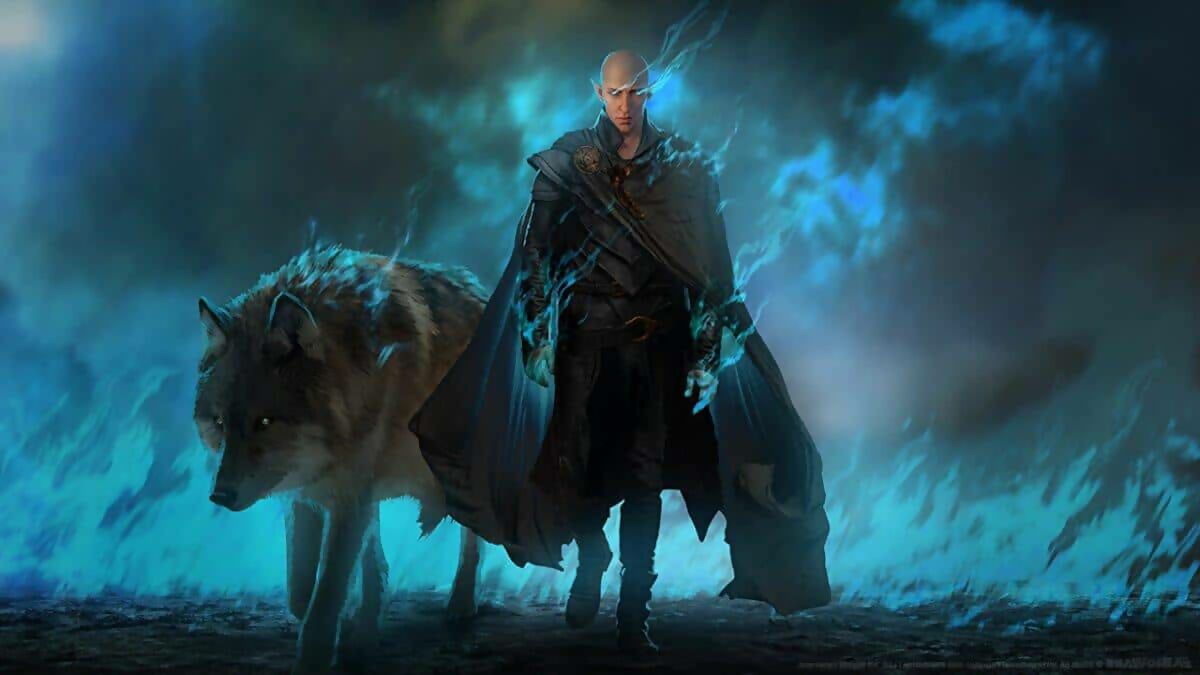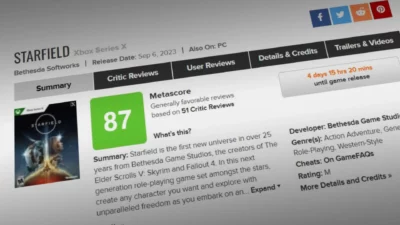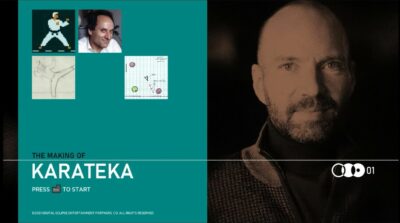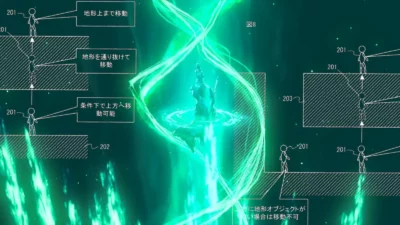
Dragon Age: Dreadwolf has been in the works for eight years, and leaked details have divided fans’ opinion. Is it time to worry yet?
BioWare was acquired by EA in 2008, and predictions of the company’s demise have haunted it ever since. Many of the Mass Effect studio’s golden-era personnel left years ago, while its once-celebrated ability to deliver on a project no matter the difficulties – its ‘BioWare Magic’ was dismissed as ‘bullshit’ by former producer Mark Darrah in a now infamous rant in 2022.
Still, BioWare has endured. The company survived the rocky reception to Mass Effect 3, bouncing back with the popular Dragon Age: Inquisition before releasing Mass Effect: Andromeda and Anthem, two universally-derided titles that again set the death knells ringing.
Since that nadir, BioWare has been working on Dragon Age: Dreadwolf, and whispers about the company’s bleak future have lessened. After all, if you can survive a pair of duffers like Andromeda and Anthem without EA swinging the axe, then you’re probably in a safe space.
While we know little about Dragon Age: Dreadwolf, February’s gameplay leak has led to rumours that changes are afoot for the series. Let’s take a look at the chatter surrounding these unplanned reveals.
Looking at the leaked Dragon Age: Dreadwolf screenshots and videos, one game immediately jumps to mind: Stranger of Paradise: Final Fantasy Origin pic.twitter.com/rRmbGLEFx1
— Felipe Pepe (@felipepepe) February 5, 2023
Hack’n’slash
The biggest news to break from the leak was the claim from play-testers that Dreadwolf is moving in a more action-oriented direction, with one former tester comparing its melee combat system to God of War.
There’s some evidence in the leaked footage to support this. Much like God of War, the camera’s situated closer to the player character than we’ve seen in Dragon Age before, and there’s talk of a timed parry system that would shift combat away from the tactical affairs we first saw in 2009’s Dragon Age: Origins.
Long-time fans might shudder, given the twitchy mess that was Dragon Age II, BioWare’s last attempt to take the series in an action-focused direction. That was a long time ago, though, and if nothing else, Mass Effect: Andromeda and Anthem shaped BioWare into a team that can create more dynamic combat, even if the wider systems that housed them were found wanting.
Dragon Age probably needs this, too. Inquisition has legions of fans and Game of the Year awards, but there’s an argument that its combat suffers from trying too hard to please everybody. Hear me out here: 2009’s Origins was tactically-deep and strategy-based. Dragon Age II abandoned much of that, presumably as EA’s mainstream influence over BioWare took root.
Dragon Age: Inquisition sought to marry the two styles together, and despite the game’s strengths, the combat didn’t really work, and lacked the depth it needed to stand out from its peers. Instead, it was Inquisition’s scope, story, lore and characters that made it a success. Playing a mage with crowd-control spells was fun enough, but playing a warrior class stripped out any remaining strategising, leaving you to do little more than spam the attack button until your ability cooldowns reset.
Deep, tactical pause-and-queue commands or real-time action RPG? Dragon Age: Dreadwolf needs to do a better job of deciding what kind of identity it wants, and that’s what seems to have happened.
While lots of us might long for the tactical depth of Origins, that’s not realistically going to be happening in a Dragon Age game anytime soon. Dreadwolf’s combat needs identity, and if that means hack’n’slash rather than a mashup that doesn’t excel at anything, then so be it.

Dragon Age II: Ultimate Edition. Credit: BioWare/EA.
Feel-factor
Comparisons to God of War have caused consternation in some quarters, but it should be pointed out that the comments made by at least one purported play tester don’t sound particularly authoritative. There are claims that Dreadwolf, reportedly a single-player game, still contains elements of its former (cancelled) incarnation as a live service title. That might fill players with fear, but the leaker also describes a Destiny-style hub, perhaps betraying an ignorance of Dragon Age’s long tradition of using hubs as a way to separate game areas and develop relationships with party members.
If the leaker can be so off-base with their Destiny reference, the mention of God of War could well be misleading, too. And with the leaked footage supposedly being well over a year old, who knows what’s changed since?
That said, the shadow of live service does hang over Dreadwolf. The project is now in its third incarnation, with the second version being a live service game in the style of Destiny or BioWare’s own doomed Anthem.
Each iteration of Dreadwolf has been a soft reset of sorts, so it’s plausible that assets from the live service iteration, codenamed Dylan, have been recycled for the current build. Will Dreadwolf’s hub be a Destiny-like area that serves as a jumping-off point for missions, or will it be like Inquisition’s Skyhold, a richly-populated fortress that can be upgraded, full of characters and mysteries to explore?
Right now, it’s impossible to say, even for the play testers who’ve experienced it. A pre-alpha version of the game’s unpopulated hub space will likely feel as empty as the first Destiny’s Tower did, so it’s unsurprising as it is premature to draw conclusions here.
Others users on Twitter pointed to leaked looks at Dreadwolf’s user interface as further proof of live service ‘seams’ being apparent, but this too is mere conjecture right now.

Dragon Age: Inquisition. Credit: BioWare/EA.
Knight-in-service
That’s not to say the Twitter crowd is wrong. After all, they spotted live service elements in Gotham Knights early and were ultimately proven right. Dreadwolf’s footage was, however, taken early in the game’s development, so drawing similar comparisons regarding game hubs or systems is difficult. Plus, having been thoroughly mangled following the release of Anthem, where its live service aspects were dragged into ignominy, it would be surprising to see the developer bank on similar systems again.
Yes, the game’s early-alpha UI boasts a similar look to titles like The Division, Destiny and Gotham Knights. Given Dreadwolf was once planned as a live service title, the fear is that some of its loot-centric shadow might remain. Put simply, though, this seems like a stretch.
If reports are accurate, senior figures at BioWare fought hard to veer EA away from its live service iteration, and it’s difficult to believe they’d win that battle, only to embrace the grinding systems that bricked Anthem.
After all, even EA can read the room eventually. Following the success of Star Wars Jedi: Fallen Order, it finally realised there’s a market for single-player triple-A games. The will surely have seen the extinction level event routing much of the live service industry right now.

Anthem. Credit: BioWare/EA.
To be this good takes Dragon Ages
What the Dragon Age series needs right now is a clear vision. Imagine, for a moment, a version of Anthem that wasn’t live service. The concept was cool, the combat and the narrative had potential, but it was all compromised by the reductive framework of a live service title. Had Anthem been designed in the classic BioWare mould, we might all be celebrating its success right now.
Likewise, one of Mass Effect: Andromeda’s problems was its curious refusal to embrace the part of its concept with the most potential. Despite taking us to a new galaxy and all of the wonder and possibility that offers, we instead found ourselves dealing with the same alien species from the original trilogy, with only a couple of new alien races to represent an entire galaxy. Where Andromeda did make daring steps, it soared, with the new combat encounters being greatly improved by the addition of jetpack movement.
All of which brings me to the thing that some players will find hardest to swallow about the recent leak: the claim that companion characters won’t be playable. First let’s wait for an official announcement before we enter a mourning period. The news is clearly unconfirmed, but does make sense when coupled with the hack’n’slash direction the game is reportedly going in.
Replacing direct companion control with executable demands would be a step away from strategy, streamlining encounters and bringing the title more in line with the action RPG stylings of Mass Effect and other hit games from the last decade. That’s probably what’s happening here, because after an eight-year development cycle on Dreadwolf, BioWare is clearly in dire need of a hit. Were it not for BioWare’s longstanding reputation, EA would likely have closed it years ago.
BioWare, it seems, is making a concerted effort to make a single-player Dragon Age for the widest base possible. Should it work, the developer may be able to pull itself out of a hole. Should the gambit fail, Dreadwolf could alienate the series’ fanbase.
Each Dragon Age game has emerged as a kind of auteur project, existing within the same universe as its predecessors but with its own tone and style. Dragon Age: Dreadwolf looks to be doing that again. ‘BioWare Magic’ or not, let’s hope the developer can conjure up a game that does the series justice.





